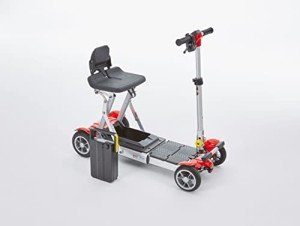Understanding Mobility Devices: Enhancing Independence and Quality of Life
In today's hectic world, the desire for mobility is universal. However, certain medical conditions or age-related challenges can prevent motion, causing an ongoing search for support. Mobility devices work as important tools to enhance self-reliance, improve lifestyle, and enable people to engage totally in their communities. This short article provides a thorough summary of mobility devices, including their types, functions, selection criteria, and more.
Types of Mobility Devices
Mobility devices range from basic aids to complex devices, customized to meet various needs. Below is a table summarizing typical types of mobility devices:
| Type of Device | Description | Perfect For |
|---|---|---|
| Walkers | Four-legged support devices that supply remarkable stability while walking. | Individuals needing additional assistance. |
| Walking canes | Single or three-legged sticks that improve balance and support walking. | Those with small mobility troubles. |
| Wheelchairs | Seats mounted on wheels, offered in manual and electric versions. | People with restricted or no mobility. |
| Scooters | Electric lorries developed for outdoor use and ease of navigation. | Those who can't walk fars away. |
| Crutches | Devices that assist individuals move weight away from an injured leg. | People recuperating from leg injuries. |
| Rollators | Walkers with wheels, seats, and brakes for boosted mobility. | Users requiring rest options while walking. |
| Lift Chairs | Reclining chairs that assist users in standing and sitting down. | Seniors or those with mobility restraints. |
| Mobility Scooters | Small electric cars for restricted mobility, frequently used outdoors. | People needing help over fars away. |
Key Features of Mobility Devices
When picking a mobility gadget, numerous key features should be considered to make sure optimum performance and ease of usage:
- Weight Capacity: Understanding the gadget's weight constraint is essential for safety and effectiveness.
- Adjustability: Devices should be adjustable in height and width to fit the user conveniently.
- Portability: Lightweight and foldable options are important for users who travel or need transport.
- Stability and Safety: Look for features like anti-tip wheels and sturdy structures to boost safety.
- Reduce of Use: Simple systems and easy to use styles can make a considerable difference in day-to-day use.
- Comfort: Ergonomic styles and padded seats can enhance the user experience.
Selecting the Right Mobility Device
Picking the ideal mobility device can be a difficult task. Here are some steps to guide the decision-making procedure:
- Assess Needs: Evaluate the person's mobility obstacles and everyday activities.
- Speak with a Professional: Engage healthcare specialists who can provide suggestions based upon the person's physical condition.
- Trial Options: If possible, trial different devices to figure out comfort and performance.
- Evaluation Budget: Consider the expense of the gadget, including any extra functions or modifications needed.
- Research Options: Determine the best brand names and models by checking out reviews and comparisons.
Table: Comparative Analysis of Popular Mobility Devices
| Device | Advantages | Downsides |
|---|---|---|
| Walkers | Excellent stability, promotes walking. | Bulky, may restrict movement in small spaces. |
| Walking canes | Lightweight, improves balance. | May not provide adequate assistance for severe mobility issues. |
| Wheelchairs | Perfect for those with substantial mobility restrictions. | Can be cumbersome, specifically in indoor environments. |
| Scooters | Great for outdoor usage, simple to maneuver. | Limited indoor use, much heavier. |
| Rollators | Offers rest alternative, easy to move. | May need more area than traditional walkers. |
| Lift Chairs | Comfy, helps shift from sitting to standing. | More pricey, larger footprint. |
Often Asked Questions (FAQs)
1. What is a mobility device?
A mobility gadget is any tool designed to help people in moving and browsing their environment. This consists of walkers, wheelchairs, scooters, and crutches.
2. How do I know which mobility device is best for me?
Consider your specific mobility difficulties, physical capabilities, and way of life needs. Consulting with healthcare specialists can also offer tailored recommendations.
3. Are mobility devices covered by insurance?
Lots of insurance coverage strategies, including Medicare, may cover specific mobility devices. folding mobility scooters with remote control to contact your insurance service provider for particular protection details.
4. Can I rent a mobility gadget instead of buying one?
Yes, many medical supply shops and drug stores offer leasings for mobility devices. This alternative is useful for individuals with short-term mobility problems.
5. How can I keep my mobility gadget?
Routine maintenance is essential. It consists of cleaning the device, looking for wear and tear, and ensuring all parts are operating correctly.
The Impact of Mobility Devices on Quality of Life
Mobility devices significantly improve the lifestyle for individuals with limited mobility. They promote self-reliance, encourage social interaction, and improve access to necessary services and recreational activities.
- Increased Independence: Users can navigate their communities, attend events, and engage in hobbies without counting on others.
- Social Engagement: Mobility devices assist in participation in celebrations, consequently combating feelings of seclusion.
- Boosted Safety: Devices supply stability and decrease the danger of falls, promoting user self-confidence.
Mobility devices are more than just tools for motion; they are entrances to self-reliance and quality living. By comprehending the various kinds of mobility aids offered, their key functions, and considerations for selecting the best device, people can make educated decisions about their mobility requires. Eventually, the best mobility device can result in a more active, fulfilling life. Whether it's a walker, wheelchair, or scooter, the ideal option contributes substantially to improving the mobility and independence of users.

